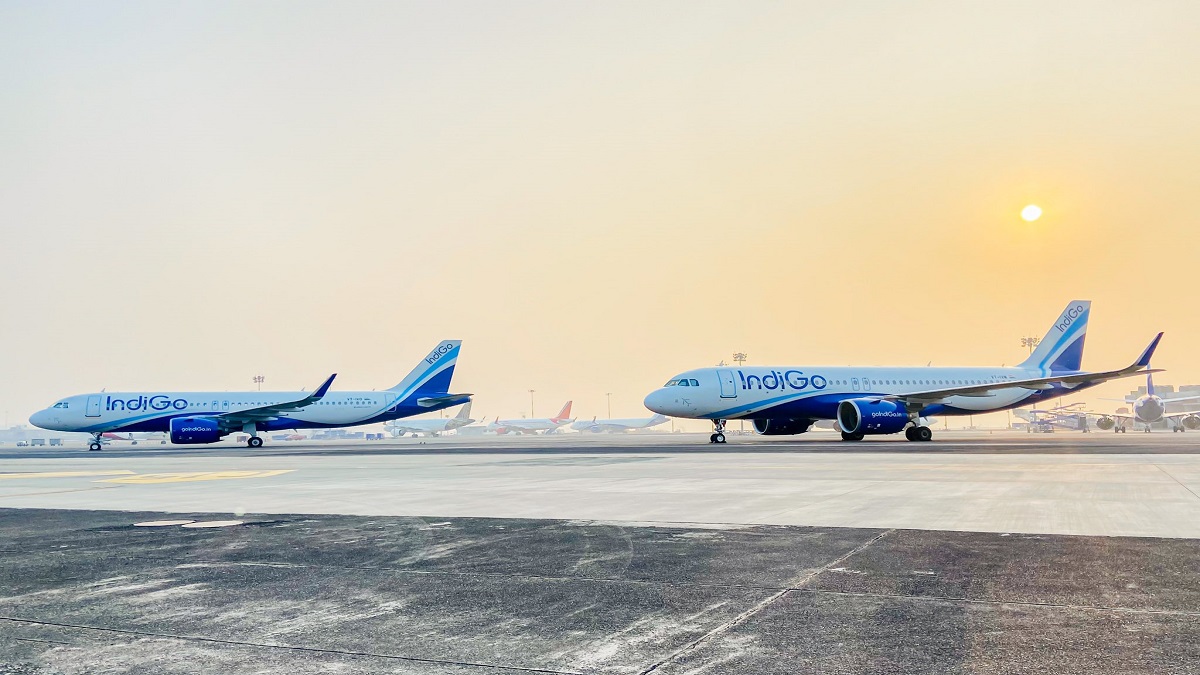Narrow Escapes; How Two IndiGo Aircraft Avoided A Mid-Air Collision In New Delhi, A Repeat Of A Near Miss In Bengaluru; Indigo Gets The Tag Of ‘The Most Unsafe’ Airline, Again!
In November of last year, a potentially disastrous incident occurred at Delhi airport involving two IndiGo aircraft. A preliminary report by the Aircraft Accident Investigation Bureau (AAIB) revealed that one of the planes deviated from its intended path after takeoff, nearly colliding with another aircraft that had just departed from a different runway. Fortunately, the quick response of the traffic alert and collision avoidance system (TCAS) prevented a collision. However, this is a repeat of yet another miss at Bangalore's Kempegowda International Airport in 2022, when two IndiGo flights narrowly avoided a mid-air collision. Departing from parallel runways, these flights were at risk of converging until the timely intervention of an approach radar controller prevented disaster. Why Is Indigo repeatedly docked for safety concerns?

According to a preliminary report from the Aircraft Accident Investigation Bureau (AAIB), two IndiGo aircraft narrowly avoided a collision shortly after departing from Delhi airport in November last year by a mere 400 Feet.
According to reports, one of the planes veered off its intended path, putting it on a potential collision course with another aircraft that had recently taken off from a separate runway. Fortunately, the traffic alert and collision avoidance system (TCAS) came into play, enabling the planes to avert disaster.
On November 17, 2023, an Airbus A321 and an A320 were scheduled for flights to Hyderabad and Raipur, respectively.
The A321, registered as VT-IUO, was cleared for takeoff from runway 27 at 12:31 pm. However, instead of following its designated course, it veered left toward the departure path of runway 29R.
Simultaneously, the A320 (VT-ISO) received clearance and took off from runway 29R, ascending to 4,000 feet, resulting in a breach of separation between the two planes, triggering a conflict alert.

At the closest point of approach, the vertical distance between the aircraft was a mere 400 feet, with a lateral separation of 1.2 nautical miles.
Thankfully, there were no reports of injuries or damage on either aircraft as the TCAS, mandated for all planes since the Charkhi Dadri crash in 1996, played a critical role in preventing a potential catastrophe.
The TCAS provides pilots with two types of advisories: a traffic advisory (TA) to alert them to nearby aircraft and a resolution advisory (RA) that instructs evasive action.
In this instance, both aircraft received TCAS-RA alerts, prompting them to alter their flight paths and avoid a collision.
Delhi airport, equipped with multiple runways, tolerates minimal margin for error.
However, there have been past instances where instructions were misinterpreted or improperly followed. In such scenarios, the prompt actions of pilots and air traffic controllers have often averted disaster.
In this particular incident, it was the TCAS technology that prevented a potentially catastrophic outcome while the pilots involved were suspended from flying duties, and IndiGo stated that appropriate measures would be taken following the investigations.
However, is this the first time that Indigo has avoided such a monumental disaster?
No!

In 2022, two IndiGo flights narrowly avoided a mid-air collision after departing from Bangalore; despite being cleared for takeoff on parallel runways, the aircraft were at risk of converging if not for the timely intervention of an approach radar controller.
The flights involved originated from Bangalore’s Kempegowda International Airport (BLR) on January 7th; both were domestic flights bound for Kolkata International Airport (CCU) and Bhubaneswar Biju Patnaik Airport (BBI), respectively.
One of the flights, IndiGo flight 6E455, was the first leg of a domestic journey continuing to Jorhat Airport (JRH), scheduled to depart from Bangalore at 08:40 local time.
The other, flight 6E246 bound for Bhubaneswar, was scheduled to depart at 08:45 local time; Airbus A320neos operated both flights with registration numbers VT-ITD (6E455) and VT-ISV (6E246).
As per reports, flight 6E455 carried 182 passengers and crew, while 6E246 reportedly had 244 passengers and despite the seeming discrepancy in passenger numbers, both flights were likely well-filled due to the recent recovery of Indian domestic aviation.
On the morning of the incident, miscommunication during a shift change nearly resulted in disaster. The planned closure of the southern runway (09R) on January 7th was not communicated to the southern tower, leading to simultaneous takeoff clearances from parallel runways.
As both flights were headed towards northeastern India, their paths were on course to converge. However, a radar approach controller, identified as 42-year-old Lokendra Singh, detected the potential collision and swiftly assigned the aircraft new diverging headings, potentially saving hundreds of lives.

The Many Investigations
The Directorate General of Civil Aviation (DGCA) has initiated an investigation into the recent near miss involving two IndiGo flights; it initiated the same in the case of the Bengaluru near miss as well.
Additionally, neither the AAI nor IndiGo promptly reported the incident to the DGCA, which was only discovered during routine surveillance.
Fly At Your Own Risk
India’s largest airline, IndiGo, has encountered several challenges in recent years.
Over the past decade, IndiGo has reported a total of 52 air safety incidents, including accidents; particularly concerning is the fact that IndiGo leads the list in terms of serious incidents, having reported 35 since 2013.
The aviation industry in India has witnessed a notable increase in problematic occurrences across Indigo, with unmet safety standards and passenger dissatisfaction being among the most significant concerns.
IndiGo, as a major player in the industry, continues to attract attention for its perceived compromises with the safety standards established by the International Civil Aviation Organization (ICAO).
Hence, when flying Indigo, it is best to assume that it’s at your own risk, literally!




